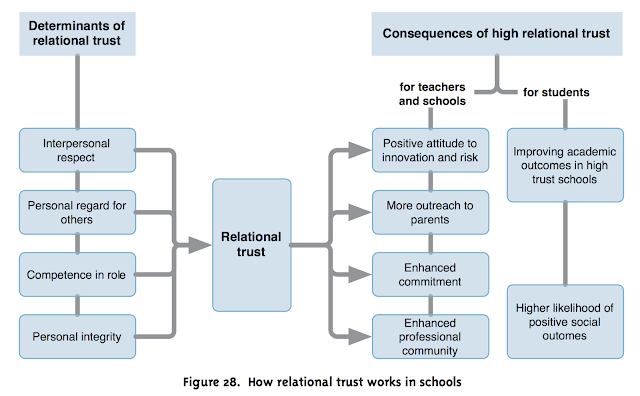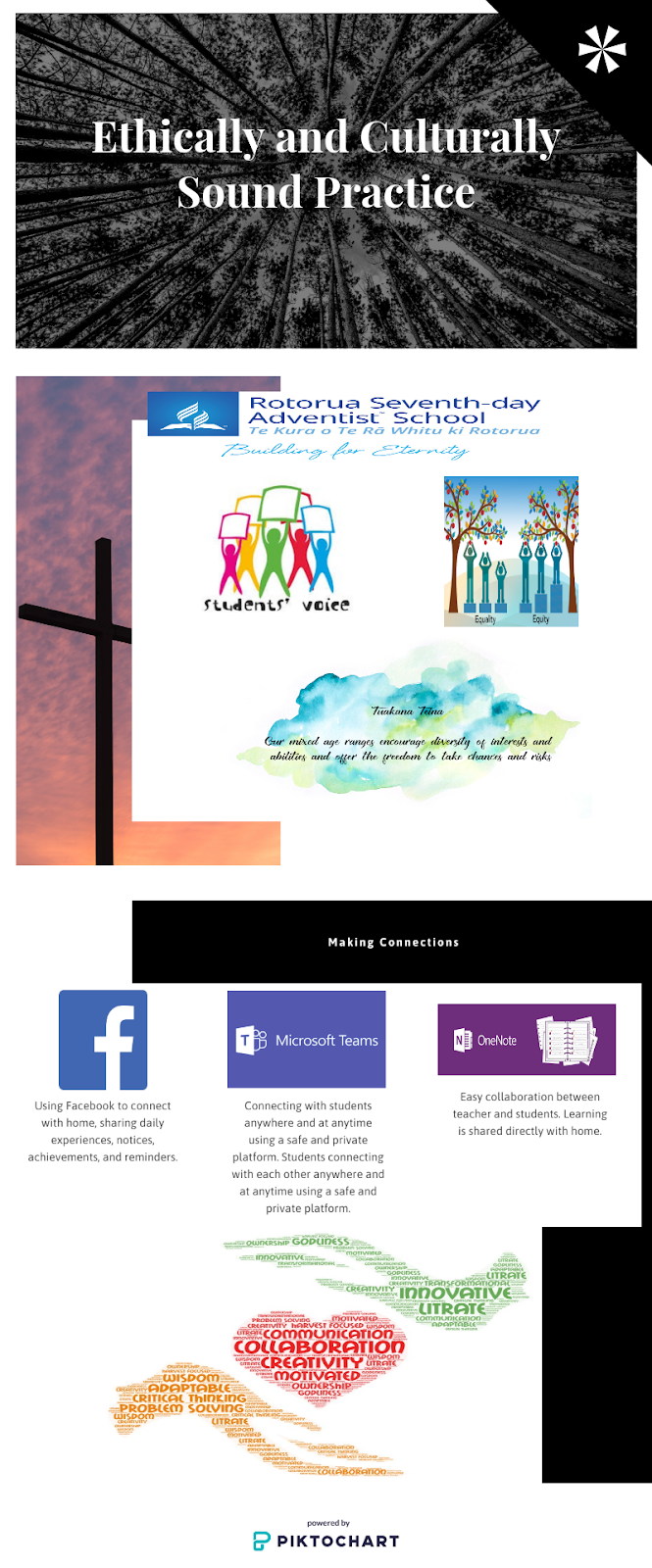Activity 10: Your Postgraduate Learning Journey and your plan for the future
Personal 32 week learning journey with regard to the 12 Practising Teacher Criteria (PTC) in e-learning.
Criteria Met:
Criteria 1: Fully registered teachers establish and maintain effective professional relationships focused on the learning and well-being of all ākonga. (Ākonga is inclusive of all learners in the full range of settings.)
Since day one of my teaching career I have been able to build strong relationships with Students, Colleagues and Whanau. As for the e-learning side of professional relationships, students use e-learning tools confidently to share information about themselves which provides a way for me to connect with them and discover insights into who they are and what they can accomplish.
During the 32 weeks of this Post. Grad. Certificate, I have become more aware of my position and the importance of online communities where I have access to discussions, shared expertise, and resources. I have learnt to use these professional learning communities to gain information, resources, and to help identify the professional learning communities that focus on improving student learning outcomes.
Criteria 5: Fully registered teachers show leadership that contributes to effective teaching and learning.
One of the things I really enjoyed during this 32 week course has been critically reflecting on my own practices and positions within my place of employment. During the paper Leadership in Digital and Collaborative Learning I was asked to identify myself with leadership theories, and to critique my leadership and that of others around me. I learnt so much about leadership and where I stand as a leader in my workplace. I have taken under my wing the ICT developments within the school and work very closely with the Principal in the decision making. By doing this I have learnt to:
- Actively contribute to the professional learning community, and,
- Undertake areas of responsibility effectively
I have learnt that the role of the e-learning leader is crucial for the successful implementation of ICT. Through professional development I have unskilled myself in many areas of ICT, not just the tools for classroom teaching and learning, but the maintenance of equipment, safety protocols for students and colleagues, professional development for other colleagues, accessing and using online learning communities, etc. All this is shared with others I work within areas of need. I have learnt to listen to the needs and wants of the students, staff members and whanau to make sure that respectful, safe use and implementation of tools is carried out.
The only thing to do next is to include the e-learning direction into our school vision.
Being part of any school can have challenging dynamics to work with regarding the implementation of appropriate learning programmes. For me, I have the added special character of a christian school to consider. Not only do I have to explore the integration of e-learning tools for the NZC content being taught, but these e-learning tools also have to take into consideration the christian values of the school. Students need to be able to access digital tools to view biblical content whilst also engaging in their learning.
Not only does the curriculum play an important part of my planning and teaching but also the learning environment. This includes the physical, social, and pedagogical context in which learning occurs. The environment I provide is innovative and supports strengths-based teaching and learning. It offers students and myself flexibility, agency, ubiquity, and connectedness. Working in an innovative learning environment where teaching and learning is collaborative, where reflections are shared, and communities engaged leads to a more robust, continuously improving community of practice. This also supports the christian like values that are practiced and instilled in the students at my place of work.
Goals for your future development:
1) In Criteria 1 there was an area I didn’t comment on – that was
developing relationships with parents/whanau.
While I am good at building relationships with whanau, the
area that does need improving is the digital side through introducing tools
that allow whanau to collaborate with their children’s learning, communicate
with their children digitally, and view e-portfolios. I have stated
e-portfolios with my year 4-6 students, however, only two whanau groups have
commented on students posts. I have also not introduced e-portfolios to my year
7-8 students yet due to time restraints.
I plan to run a whanau evening where family members can come
in to school and be shown how to access their child’s blog and learning stories
online. This will hopefully get the students more enthusiastic about their
learning and sharing it.
2) Criteria 6 is an area I feel very confident with but upon
reflecting and attending a Seventh Day Adventist Teacher Induction program, I
have realized there is room for improvement.
I need to demonstrate my knowledge and understanding of
godly content and have this evident in my planning. I also need to draw on this
knowledge and use the language of God as part of my teaching language. The link
to ICT is through the students having direct access to biblical readings,
comparing real world events to Godly mannerisms, and being able to connect with
their community – digitally - to gain a better understanding of the Seventh Day
Adventist values.
References:


Comments
Post a Comment